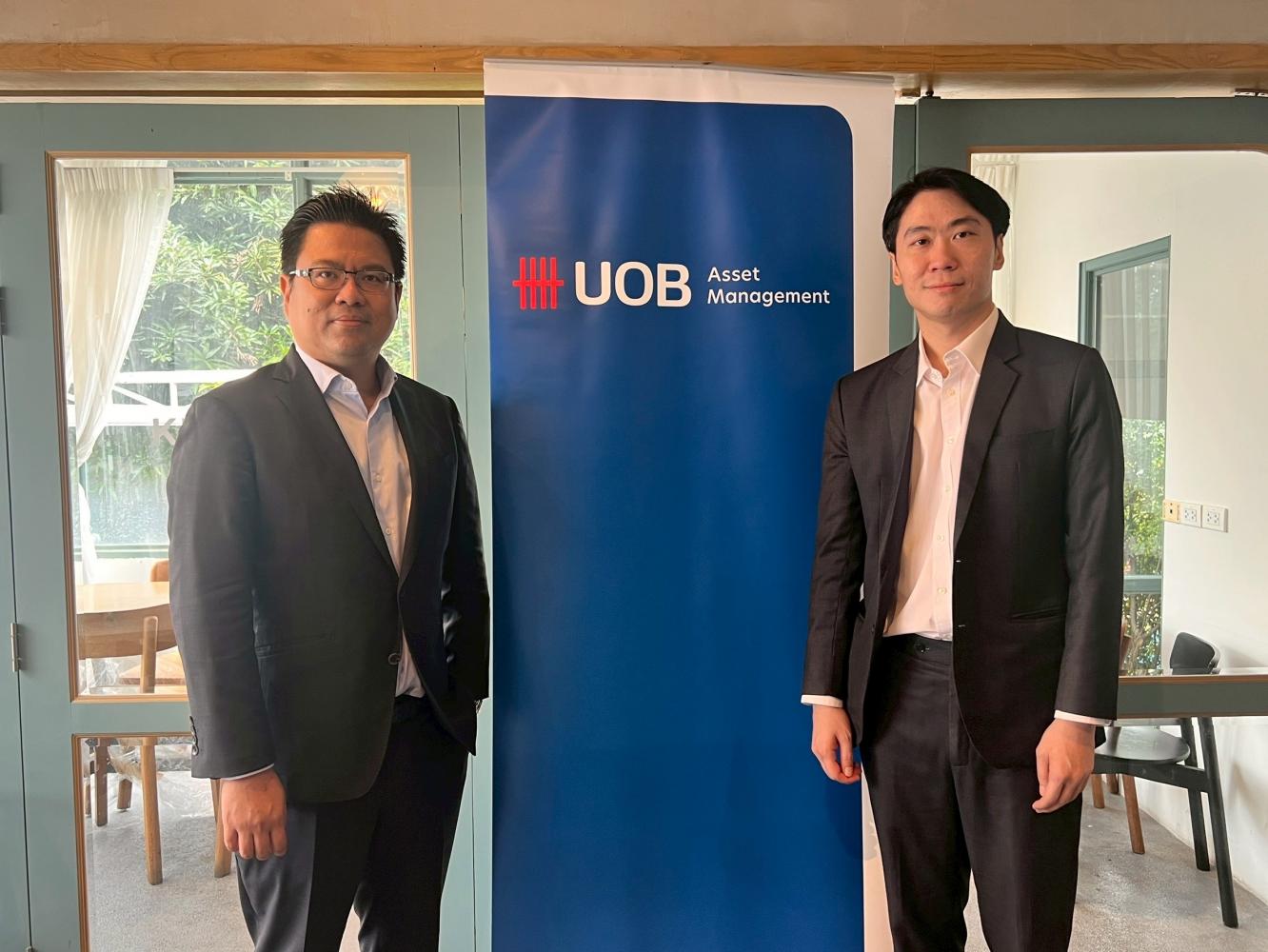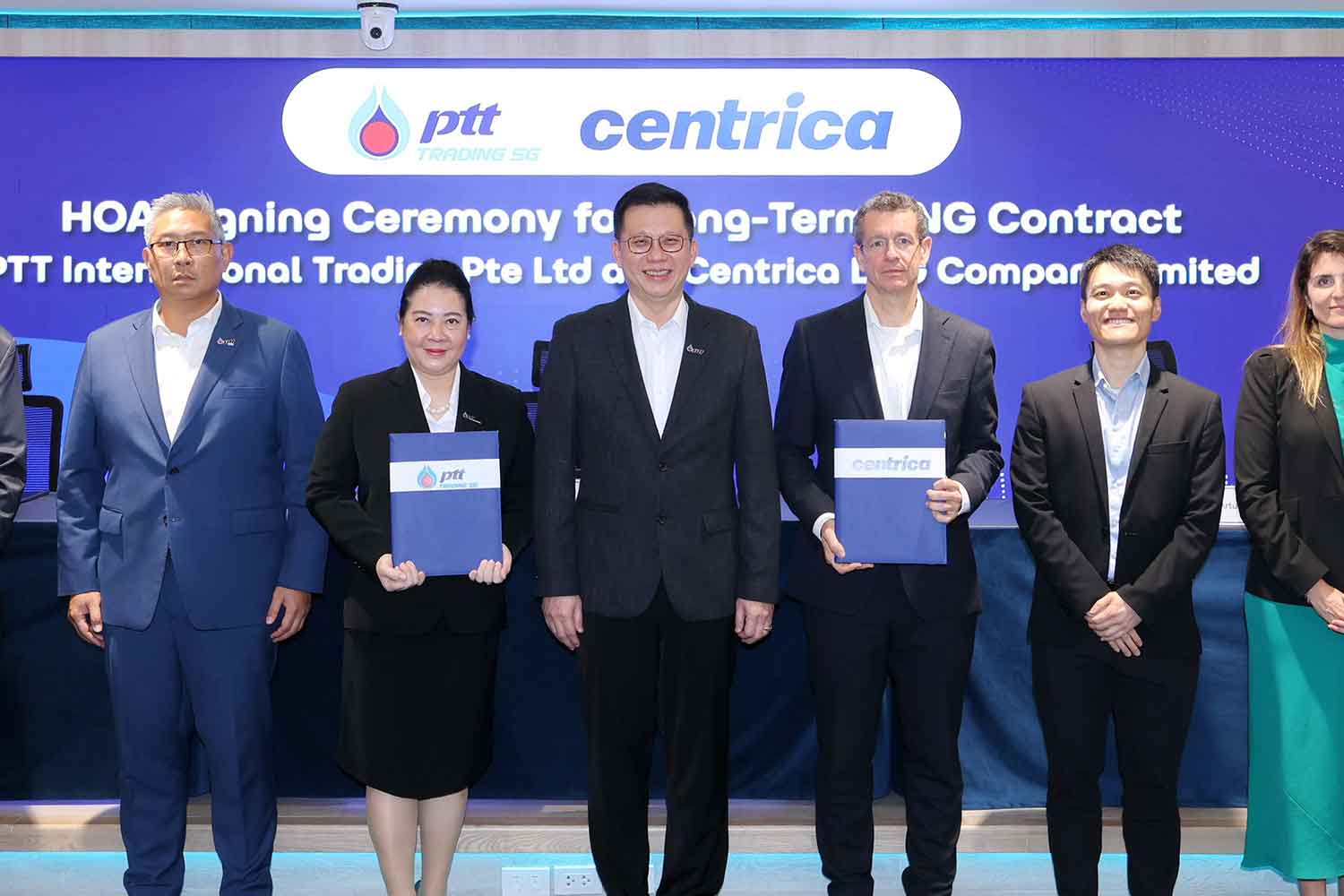Mr Nattapon believes that additional monetary easing by the Bank of Thailand could offer further support to financial markets, while Mr Kulachat emphasizes that diversification across equities, bonds, and gold will be essential to capturing opportunity and dampening volatility in the coming months. As Thai equities have rebounded, UOB Asset Management (UOBAM) urges investors to broaden their portfolios in the second half of 2025, with a deliberate tilt toward technology stocks, as well as fixed income and precious metals. The CIO of UOBAM, Nattapon Chansivanon, notes that the Thai equity market and the broader global economy are likely to experience a gradual recovery in the latter half of the year, aided by clearer directions in U.S. trade and tax policy. Domestically, the combined force of government stimulus, renewed infrastructure investments, and foreign capital inflows into the digital sector are driving the current cycle. This context suggests a period of resilience for markets, yet it also highlights the importance of prudent risk management given structural headwinds in the Thai economy. The potential for additional monetary easing by the Bank of Thailand is seen as a supportive backdrop, but investors must acknowledge ongoing challenges, including persistently high household debt and a slower rebound in tourism. In the United States, the economy is positioned for a soft landing, supported by the fiscal framework embedded in the administration’s broader stimulus agenda and potential Federal Reserve rate cuts designed to ease pressures in the labor market. The technology sector on Wall Street continues to attract significant investor interest, propelled by the rapid expansion of generative AI capabilities, even as valuations in the sector have moved higher relative to peers in other regions. Inflation remains a critical variable, with tariff-related price pressures anticipated to emerge later in the year or in early 2026, according to the asset manager. Europe is showing signs of steady improvement as rate cuts by the European Central Bank combine with fiscal outlays on defense and infrastructure programs. Nonetheless, stronger-than-expected growth could lessen the need for further stimulus, reducing the urgency of policy accommodation. In Asia, Japan is delivering moderate growth driven by domestic consumption, though inflation risks linger due to a tight labor market, which could increase the probability of further rate hikes by the Bank of Japan. Meanwhile, China presents a more fragile picture, as soft domestic demand underscores the necessity for more decisive policy support to stabilize growth, a challenge highlighted by UOBAM. Against this broad backdrop, UOBAM endorses a diversified investment approach that allocates 60% to bonds and 40% to equities, with half of the equity allocation directed toward U.S. technology stocks and the remainder spread across China, India, and Thailand. The firm recommends maintaining roughly 10% of the portfolio in gold as a hedge, targeting portfolio returns in the 6% to 8% range. This strategic framework reflects both the opportunities and the risks embedded in today’s global markets and seeks to balance upside potential with downside protection.
Global Macro Backdrop and Thai Market Context
The current global macro environment presents a complex mix of growth signals, policy shifts, and sectoral leadership, all of which feed into how investors should position themselves in the second half of 2025. In Thailand, the assessment centers on a rebound in equity markets driven by domestic stimulus measures and an appreciation of foreign capital inflows into growth-oriented sectors, notably the digital economy. The government’s proactive stance on infrastructure and development projects remains a cornerstone of the local growth thesis, which, in turn, supports corporate earnings and investment sentiment. At the same time, Thai policymakers have to contend with structural vulnerabilities such as high household indebtedness, which can constrain consumer spending and limit the pace of domestic demand recovery. The uneven rebound in tourism activity further complicates the macro picture, as this sector has historically been a significant growth lever for the Thai economy. Against this backdrop, the Bank of Thailand’s policy path will be closely watched by markets, with expectations for further easing priced in by many analysts to support liquidity, reduce borrowing costs, and sustain the recovery trajectory. The policy stance will interact with global developments, including the evolving stance of major central banks and the trajectory of inflation, to shape the risk-return profile for Thai assets in the near term.
On the U.S. side, the economy appears to be steering toward a soft landing, supported by the administration’s broad fiscal stimulus framework, commonly referenced by insiders as a large-scale legislative package designed to support growth and employment. Federal Reserve policy may tilt toward rate cuts as conditions in the labor market cohere with policymakers’ inflation targets, providing relief to investors and consumers alike. This potential easing is expected to feed through to lower borrowing costs, higher consumer spending power, and a more favorable financing environment for corporate activity and debt issuance. The technology sector in the United States remains a key driver of risk appetite, with investors drawn to the productivity and innovation embedded in AI-driven platforms and applications. However, valuations in the tech space remain a focal point, particularly when compared with valuations in other regions, where the pricing dynamics may present different risk-reward profiles. The inflation narrative continues to be a critical variable, with tariff exposure and supply chain pressures potentially influencing price levels as the year progresses. Part of the reason investors remain engaged in U.S. tech is the perception that secular growth themes—such as AI, cloud computing, and digital transformation—offer structural advantages that justify higher multiples relative to global peers. Inflation dynamics, tariff risks, and evolving monetary policy will continue to be central to forecasting and risk management.
In Europe, the combination of rate reductions and substantial fiscal outlays aimed at defense, energy resilience, and infrastructure has started to reframe growth expectations. The region’s recovery has been more resilient than anticipated, and this resilience could mean that additional stimulus becomes less necessary than previously thought. Nevertheless, policymakers remain mindful of the possibility that stronger-than-expected growth could alter the policy calculus, reducing the urgency for further stimulus and influencing currency and bond markets. The inflation environment in Europe has shown signs of moderating, which supports a smoother path for rate navigation but keeps vigilance on energy prices and supply-side constraints that could reintroduce volatility if supply shocks intensify. For investors, Europe offers a different set of risk-reward dynamics, with exposure to manufacturing, technology, and high-value services contributing to a diversified portfolio alongside U.S. exposure. Asia presents a different mosaic, where Japan’s moderate growth is increasingly supported by domestic demand and policy support, even as inflationary pressures and a tight labor market raise the odds of further rate adjustments by the Bank of Japan. The policy stance in Japan remains vigilant, balancing the objective of stimulating growth with the necessity of ensuring price stability in a context of global supply chain realignments and wage dynamics. The Chinese economy, facing softer domestic demand, underscores the need for decisive policy measures to stabilize growth and maintain a credible path toward rebalancing away from overreliance on external demand. In this environment, UOBAM emphasizes the importance of broad diversification across geographic regions and sectors to harvest opportunities while cushioning against the volatility inherent in any single market.
Recognizing these cross-currents, UOBAM proposes a disciplined allocation framework designed to harness upside potential while preserving capital in turbulent times. The recommended structure allocates 60% to fixed income and 40% to equities, a mix designed to provide income and capital preservation via bonds while still offering growth upside through equities. The equity slice is intentionally tilted toward U.S. technology companies—an anchor for growth—while also incorporating exposure to China, India, and Thailand, thereby broadening the growth engines behind the portfolio. In addition, a 10% position in gold is advocated as a hedge against macro uncertainties and potential inflationary pressures. The expected overall portfolio return target of 6% to 8% reflects a balanced view of the current risk-reward landscape, acknowledging that returns are inherently linked to macro trajectories and policy actions across major markets. This allocation is not static; it is designed to adapt as new data emerge, with ongoing reassessment of risk exposures and potential shifts in policy signals that could alter market dynamics.
Policy, Inflation, and Market Implications
Policy trajectories across regions continue to shape market expectations in meaningful ways. The U.S. could tilt toward more accommodative policy if inflation pressures reassert themselves or if the labor market cools sufficiently to justify a softer stance. Conversely, if inflation proves stickier than anticipated, rate cuts could be delayed, altering the discount rates used in valuing growth assets and shifting the relative attractiveness of equities versus bonds. In Europe, continued progress on defense spending and infrastructure investments could sustain growth momentum, potentially reducing the urgency for additional monetary stimulation while offering a conducive environment for corporate earnings. In Asia, the BoJ’s policy path remains a critical variable; if wage growth accelerates and domestic demand strengthens, a gradual shift away from ultra-loose policy could materialize, impacting currency and yield curves. Meanwhile, China’s policy support remains a focal point for investors seeking to stabilize demand and sustain a reliable growth trajectory, especially given the cross-border implications for supply chains and regional trade dynamics. The combined effect of these policy developments will shape sector leadership and regional performance, reinforcing the need for a diversified approach that can weather a range of outcomes.
Regional and Sector Outlook
The regional narrative remains nuanced, with distinct drivers shaping the performance of equities, bonds, and commodities across the globe. In the United States, technology remains a central pillar of earnings growth, underpinned by the expansive opportunities presented by artificial intelligence and the digital economy. The sector’s optimism is tempered by caution around valuation, which could tighten if macro headwinds intensify or if competitive dynamics shift. Within Europe, the confluence of lower interest rates and robust public investment supports a favorable environment for corporate profits and infrastructure-related sectors, though the pace of growth could outstrip expectations if external risks escalate. The region’s exposure to global demand, particularly in export-oriented industries, makes it sensitive to shifts in the global cycle even as domestic policy remains supportive. Asia, and Japan in particular, offer a mixed but constructive outlook: domestic consumer demand is a stabilizing force, while the possibility of further rate adjustments remains tied to how inflation and labor market conditions evolve. China embodies a more delicate trajectory; while policy support persists, the pace and durability of domestic demand will be decisive to sustaining growth and investor confidence in the near term. A resilient and diversified approach to Asia, with careful monitoring of policy signals and consumption patterns, is essential given the region’s central role in global supply chains and technology development.
Within the U.S. technology sphere, the momentum driven by AI investments continues to attract capital, even as valuations may differ across regions. Investors are evaluating the degree to which AI breakthroughs translate into sustained productivity gains and margin expansion, which in turn informs the risk premium priced into tech equities. In Europe, defense and infrastructure investments provide a credible growth engine, with policy decisions and procurement cycles likely to influence the pace of sectoral leadership. In Asia, the outlook is shaped by Japan’s domestic demand, as well as China’s need for stronger policy steps to stabilize growth amid shifting consumer behavior and investment dynamics. The diversification framework proposed by UOBAM seeks to capture these regional narratives by balancing exposure to high-growth tech themes with exposure to bonds and gold as defensive layers. The proposed 60/40 split, complemented by targeted geographic weights and an allocation to gold as a hedge, aims to deliver a more stable return profile while preserving upside potential in a range of market environments.
Sector-Specific Outlook and Thematic Opportunities
On the thematic front, technology remains a central engine of growth, supported by a wave of innovation in AI, cloud computing, and digital ecosystems. UOBAM’s approach highlights the role of US technology equities as a core driver of the equity sleeve, reflecting expectations for sustained productivity gains and market leadership in compelling growth narratives. Beyond tech, there is value in exposure to China and India as engines of demographic-driven growth and rapidly expanding tech ecosystems. Thailand’s own tech and digital transformation initiatives can unlock new investment opportunities at the domestic level, while the infrastructure and defense-related sectors in Europe and elsewhere can offer resilience in the face of macro uncertainty. For fixed income, the bond allocation provides a cushion against equity volatility and interest rate risk, while offering a source of income to support total returns. Gold, as a hedge against inflation and macro shocks, remains a critical component of the strategy, providing diversification benefits that can help smooth portfolio performance during periods of market stress. In summary, the regional and sector outlook supports a diversified, multi-asset approach that aims to combine growth opportunities with defensive ballast in a coherent, risk-managed framework.
Asset Allocation and Fund Recommendations
UOBAM’s stated allocation strategy prescribes a 60% bond and 40% equity split, designed to blend income generation, capital preservation, and growth exposure. Within the 40% equity sleeve, half is directed toward United States technology equities to anchor growth potential, while the remaining half is allocated across China, India, and Thailand to capture regional growth drivers and diversification benefits. The bond sleeve focuses on duration, credit quality, and yield considerations that balance income with risk controls, aiming to provide steady income streams amid potential rate volatility. The portfolio also contemplates a 10% allocation to gold as a hedge against inflation and broader macro uncertainty, reflecting a belief that precious metals can provide a reliable ballast when traditional risk assets face crosscurrents. The overall portfolio is projected to deliver expected returns in the 6%-8% range, acknowledging that actual performance will depend on macro trajectories and policy developments across major markets. This framework emphasizes the importance of broad diversification as a core principle to manage risk while pursuing growth.
Within the UOBAM product ecosystem, a range of funds is highlighted to implement this strategic framework. For liquidity and capital preservation, the Thai Cash Management Fund is described as a low-risk fund that invests in short-term, high-quality debt instruments and bank deposits, including government and state-enterprise bonds and bills, with the objective of preserving capital while producing stable, albeit modest, yields. The lineup also includes global bond funds and multi-asset funds that provide diversified exposure to fixed income and a mix of asset classes suitable for a balanced allocation. For equity exposure, the spotlight falls on US growth and technology through funds such as UUSA-M and UUSTECH, which align with the strategy’s emphasis on technology leadership. For long-term investors, high-quality global equity funds such as UGD and UGEAR are highlighted, alongside sustainable infrastructure investments via UINFRA and gold exposure via UOBSG-H. The emphasis on these funds reflects a preference for robust, quality-oriented strategies that can navigate cyclical fluctuations while pursuing secular growth themes. In addition to these core offerings, the asset manager underscores a cautious approach toward risk, acknowledging that diversification across equities, bonds, and gold is essential for capturing returns while managing volatility in the months ahead. This perspective reinforces the idea that a well-structured portfolio with thoughtful asset allocation and quality fund selections can help investors navigate an evolving market landscape.
Fund-Specific Insights and Implementation Notes
The recommended funds are positioned to deliver a balanced exposure across growth, income, and risk management. The UUSA-M and UUSTECH funds provide a direct channel to U.S. technology leadership, which remains a focal point of the growth narrative in the current cycle. The global equity options such as UGD and UGEAR extend exposure to quality international equities, ensuring diversification beyond the United States. UINFRA offers access to critical infrastructure-related equities and bonds that may benefit from ongoing public investments in sustainability and resilience. The gold exposure through UOBSG-H serves as a hedge against inflation and macro shocks. In the fixed income arena, the Thai-focused liquidity and short-duration funds provide stability and capital preservation, complementing global bond strategies that can generate income in varying interest rate environments. For investors with a longer time horizon, the multi-asset funds and diversified portfolios presented by UOBAM offer a practical route to implement the 60/40 framework while aligning with risk tolerance and liquidity needs. The recommendations emphasize a disciplined, outcome-focused approach, with ongoing monitoring and periodic rebalancing to maintain the intended risk-return profile.
Practical Considerations for Investors
Investors should consider their time horizon, liquidity needs, and risk tolerance when aligning with UOBAM’s proposed allocation. A 60/40 framework can be suitable for balanced investors seeking growth with a degree of capital protection, though the precise mix may be adjusted in response to evolving market conditions. The recommended emphasis on U.S. technology equities reflects a belief in the enduring growth advantages of leading tech platforms, while the inclusion of China, India, and Thailand in the equity mix recognizes the growth opportunities across emerging markets with favorable demographics and digital modernization trends. The bond component aims to provide stability and income, reducing the portfolio’s sensitivity to equity market swings, and gold serves as a defensive hedge during times of macro uncertainty or inflation pressure. Investors should also remain mindful of risks such as household debt dynamics, inflation trajectories, and China’s recovery pace, which can influence asset performance and policy directions. A structured due diligence process and consultation with a financial advisor can help tailor the framework to individual circumstances, ensuring that the portfolio aligns with financial goals, risk tolerance, and time horizons.
UOBAM Product Suite and Thematic Positioning
Kulachat Chandavimol, the chief marketing officer at UOBAM, highlights the breadth of its product lineup designed to meet diverse investor needs and risk appetites. The Thai Cash Management Fund stands out as a low-risk liquidity option, focusing on short-term, high-quality debt instruments and bank deposits, including government and state-enterprise bonds and bills. The objective is capital preservation with stable, low-yield returns that can serve as a defensive core within a diversified portfolio. Beyond liquidity, UOBAM offers global bond funds and multi-asset funds to provide broader fixed-income exposure and the benefits of asset diversification across asset classes and geographies. For equity exposure, UOBAM points to opportunities in the U.S. growth and technology space through dedicated funds such as UUSA-M and UUSTECH, which are designed to capitalize on the leadership and innovation within the U.S. technology ecosystem. For longer-term investors seeking higher quality international exposure, the lineup includes funds like UGD and UGEAR, which emphasize quality global equities, while sustainable infrastructure investments are represented by UINFRA. Gold exposure is addressed through UOBSG-H, aligning with the portfolio’s hedging strategy against inflation and macro shocks. The product suite also encompasses thematic and multi-asset options, enabling investors to build diversified, risk-managed portfolios that reflect evolving market dynamics and long-term growth themes. The overarching message from Kulachat is that diversified exposure across equities, bonds, and gold remains essential to capture returns while moderating volatility in the months ahead, particularly in a landscape shaped by policy shifts, inflation dynamics, and uneven regional recoveries.
Practical Implementation of the Product Suite
Investors can access a spectrum of fund types that support the 60/40 allocation framework and its regional emphasis. For liquidity and capital preservation, Thai investors have access to Thai Cash Management Fund, which emphasizes high-quality, short-duration debt instruments and domestic bank deposits to deliver stability. For longer-term bond exposure, global bond funds provide diversification across credit quality and currency exposure, while multi-asset funds deliver a single, blended approach to volatility management and return potential. In equities, U.S. technology-focused funds like UUSA-M and UUSTECH enable investors to participate in the growth engine of American tech leadership, while global and regional equity funds such as UGD and UGEAR allow for exposure to high-quality companies with robust earnings profiles in developed and emerging markets. Infrastructure-oriented funds like UINFRA capture secular themes in sustainable and resilient infrastructure, supporting long-term growth. Gold-oriented products such as UOBSG-H provide diversification benefits and inflation hedging. The product suite’s flexibility supports a range of investment styles and horizons, from conservative liquidity-focused strategies to more aggressive, growth-oriented allocations. Investors should assess their liquidity needs and risk tolerance when selecting funds and should consider periodic rebalancing to maintain alignment with the target allocation.
Risks and Cautions Within the Product Strategy
While the product lineup is designed to capture growth opportunities and manage risk, investors should be mindful of potential downside risks. Elevated household debt within Thailand and other regions can constrain consumer demand and weigh on local growth, potentially impacting domestic equities and credit markets. Inflationary pressures, including tariff-driven price effects, could influence input costs and consumer prices, affecting earnings and investment returns. China’s recovery trajectory remains uneven, with domestic demand softness presenting ongoing policy challenges and potential spillovers to global markets. Moreover, currency movements can influence the performance of international bond and equity funds, especially in a world where monetary policy divergence remains a salient theme. Given these realities, diversification across geographic regions and asset classes remains a prudent strategy to mitigate risks while seeking consistent returns. Investors are encouraged to maintain a long-term perspective, stay informed about policy developments, and coordinate with financial professionals to refine portfolio allocations as conditions evolve.
Thematic and Structural Rationale for Fund Choices
The funds emphasized by UOBAM are selected to align with a philosophy of quality, resilience, and growth potential. American technology funds are positioned to capitalize on the sector’s leadership and continued innovation, while global equity funds offer exposure to established and emerging markets with solid corporate fundamentals. Infrastructure-focused investments reflect an emphasis on sustainable and long-duration growth themes that benefit from public investment cycles. The blend of bonds and gold complements this framework by providing income streams and hedge characteristics that can stabilize performance during episodes of market stress or policy shifts. The product suite thus supports a well-rounded approach to modern investing, balancing growth drivers with defensive elements to help investors navigate volatility and manage risk.
Final Thoughts on Product Strategy
In sum, UOBAM’s product lineup and allocation framework are designed to deliver a cohesive, diversified approach that blends growth potential with risk management. The emphasis on U.S. technology equities as a core growth engine is balanced by exposure to high-potential markets in China, India, and Thailand, while a substantial bond allocation and a gold hedge provide ballast against macro fluctuations. The Thai Cash Management Fund offers a reliable liquidity option for capital preservation, while global bond and multi-asset funds ensure broad fixed-income and diversified exposure. For equity exposure beyond the United States, funds such as UGD, UGEAR, and global technology-centric options offer avenues to participate in international growth trends. The inclusion of UINFRA and UOBSG-H supports a long-term investment thesis around sustainable infrastructure and inflation hedging, respectively. The overarching aim is to deliver a balanced, resilient, and growth-oriented portfolio that can adapt to evolving market dynamics and policy landscapes.
Investor Guidance and Takeaways
Investors should consider the overall macro backdrop, the diversification logic, and the specific fund mechanisms when constructing or adjusting portfolios. The 60/40 allocation framework, with a technology-forward equity tilt and a meaningful gold hedge, reflects a careful compromise between potential upside and risk control. While the U.S. technology theme offers persuasive long-term growth arguments, it is essential to maintain exposure to other regions to capture diverse growth engines and to mitigate idiosyncratic risks associated with any single market or sector. The policy environment—ranging from U.S. fiscal stimuli and tax policy to European defense and infrastructure spending, and Asian central bank actions—will continue to shape market dynamics and relative valuations. Investors should monitor indicators such as inflation prints, wage growth, consumer demand, and policy signals, adjusting allocations as necessary to stay aligned with financial goals and risk tolerance. The guidance from UOBAM underscores a disciplined, research-driven approach to asset allocation, with a clear emphasis on diversification, quality, and the use of strategic fund selections to realize the intended risk-adjusted returns.
Diversification as a Core Strategy for Returns and Stability
Across the investment landscape, diversification remains the central tenet for achieving returns while controlling risk. The emphasis on combining equities, bonds, and gold is not merely a theoretical construct; it represents a practical response to a world characterized by policy changes, inflation variability, and uneven economic recoveries across regions. For investors seeking exposure to technology-led growth, U.S. equities offer compelling opportunities but must be balanced with international exposure to temper concentration risk. The 60/40 framework provides a robust anchor for a diversified portfolio, but it should be viewed as a flexible guide rather than a rigid constraint, allowing for adjustments in response to changing market dynamics, risk appetite, and evolving macro data. The goal is to construct a resilient portfolio capable of delivering meaningful returns over time, even when volatility spikes or macro headwinds intensify. As Thailand and regional markets stand to benefit from global recovery trends, it remains essential to remain vigilant about risks linked to household debt, inflation pressures, and China’s recovery pace, all of which can affect the performance of various asset classes. By maintaining a deliberate approach to diversification and staying attuned to policy developments, investors can position themselves to capture returns while navigating volatility in the months ahead.
Conclusion
In summary, UOBAM presents a coherent, multi-asset strategy tailored to the 2025 second half dynamics in Thailand and global markets. The proposed approach balances growth-oriented exposure—particularly to U.S. technology—with strategic diversification across China, India, and Thailand, while maintaining a meaningful fixed-income component and an inflation hedge through gold. The Thai market context, supported by potential further easing from the Bank of Thailand and domestic growth drivers such as government stimulus and infrastructure investment, underpins a constructive medium-term outlook. At the same time, the carefully calibrated risk considerations—ranging from household debt to inflation and China’s recovery path—call for a disciplined investment posture and ongoing portfolio review. The fund lineup, including U.S. technology funds, global equities, infrastructure strategies, and liquidity and bond options, is designed to be practical and actionable for investors seeking to implement a diversified, resilient plan capable of delivering 6%–8% targeted returns over the coming period. By embracing a structured, diversified strategy that integrates growth potential with defensive elements, investors can navigate the evolving macro landscape, manage volatility, and work toward long-term financial objectives.





